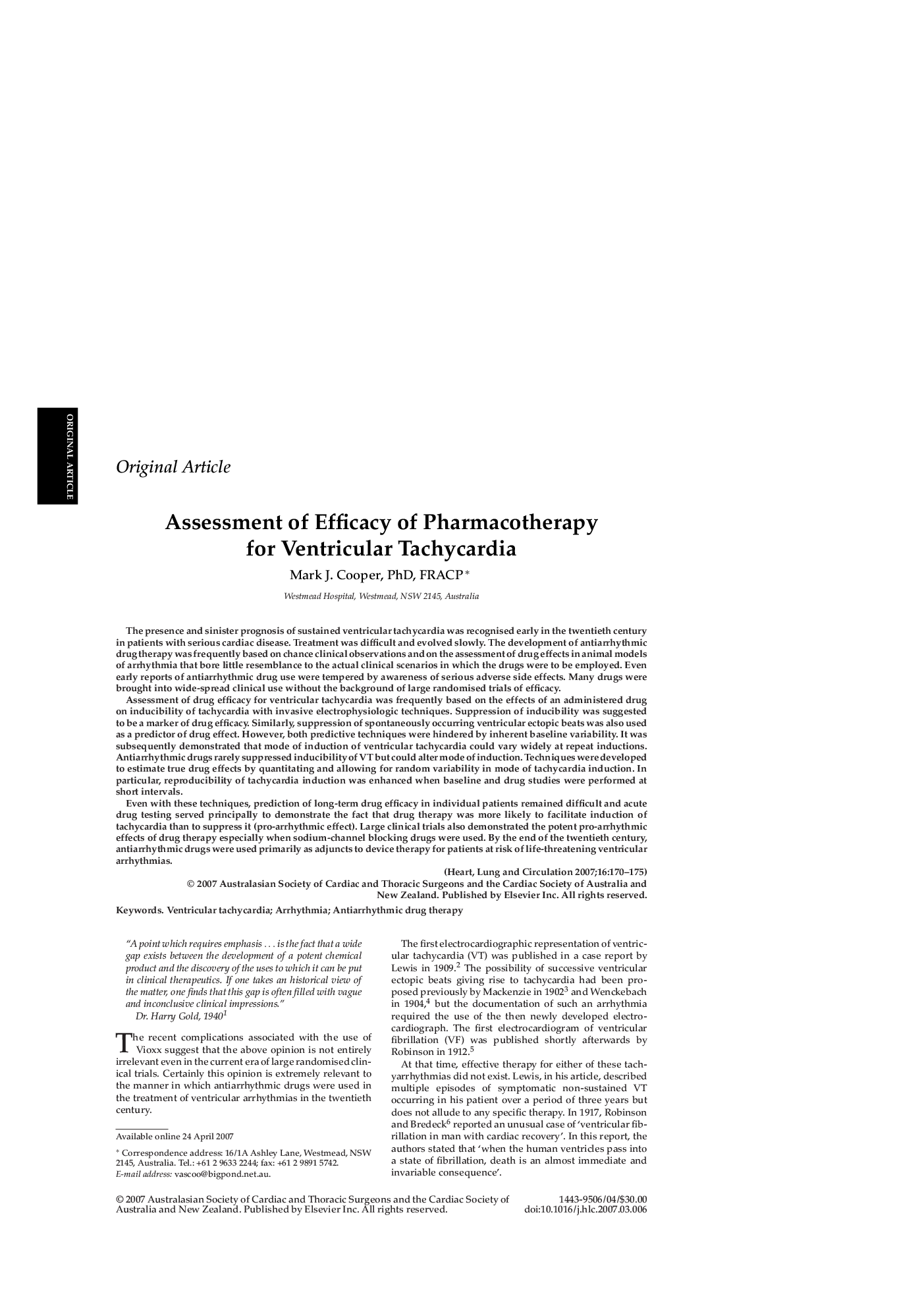| کد مقاله | کد نشریه | سال انتشار | مقاله انگلیسی | نسخه تمام متن |
|---|---|---|---|---|
| 2920143 | 1175728 | 2007 | 6 صفحه PDF | دانلود رایگان |

The presence and sinister prognosis of sustained ventricular tachycardia was recognised early in the twentieth century in patients with serious cardiac disease. Treatment was difficult and evolved slowly. The development of antiarrhythmic drug therapy was frequently based on chance clinical observations and on the assessment of drug effects in animal models of arrhythmia that bore little resemblance to the actual clinical scenarios in which the drugs were to be employed. Even early reports of antiarrhythmic drug use were tempered by awareness of serious adverse side effects. Many drugs were brought into wide-spread clinical use without the background of large randomised trials of efficacy.Assessment of drug efficacy for ventricular tachycardia was frequently based on the effects of an administered drug on inducibility of tachycardia with invasive electrophysiologic techniques. Suppression of inducibility was suggested to be a marker of drug efficacy. Similarly, suppression of spontaneously occurring ventricular ectopic beats was also used as a predictor of drug effect. However, both predictive techniques were hindered by inherent baseline variability. It was subsequently demonstrated that mode of induction of ventricular tachycardia could vary widely at repeat inductions. Antiarrhythmic drugs rarely suppressed inducibility of VT but could alter mode of induction. Techniques were developed to estimate true drug effects by quantitating and allowing for random variability in mode of tachycardia induction. In particular, reproducibility of tachycardia induction was enhanced when baseline and drug studies were performed at short intervals.Even with these techniques, prediction of long-term drug efficacy in individual patients remained difficult and acute drug testing served principally to demonstrate the fact that drug therapy was more likely to facilitate induction of tachycardia than to suppress it (pro-arrhythmic effect). Large clinical trials also demonstrated the potent pro-arrhythmic effects of drug therapy especially when sodium-channel blocking drugs were used. By the end of the twentieth century, antiarrhythmic drugs were used primarily as adjuncts to device therapy for patients at risk of life-threatening ventricular arrhythmias.
Journal: Heart, Lung and Circulation - Volume 16, Issue 3, June 2007, Pages 170–175